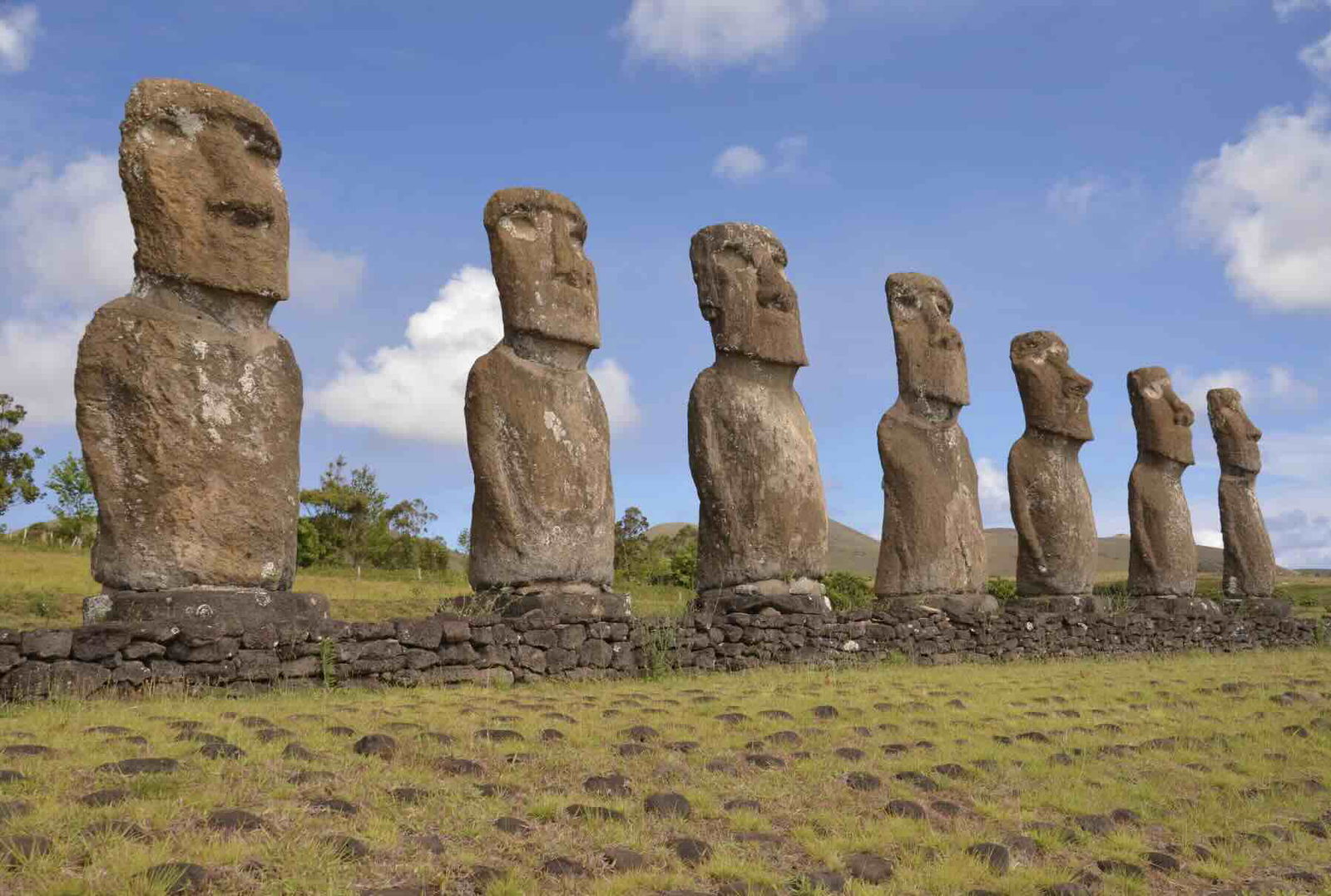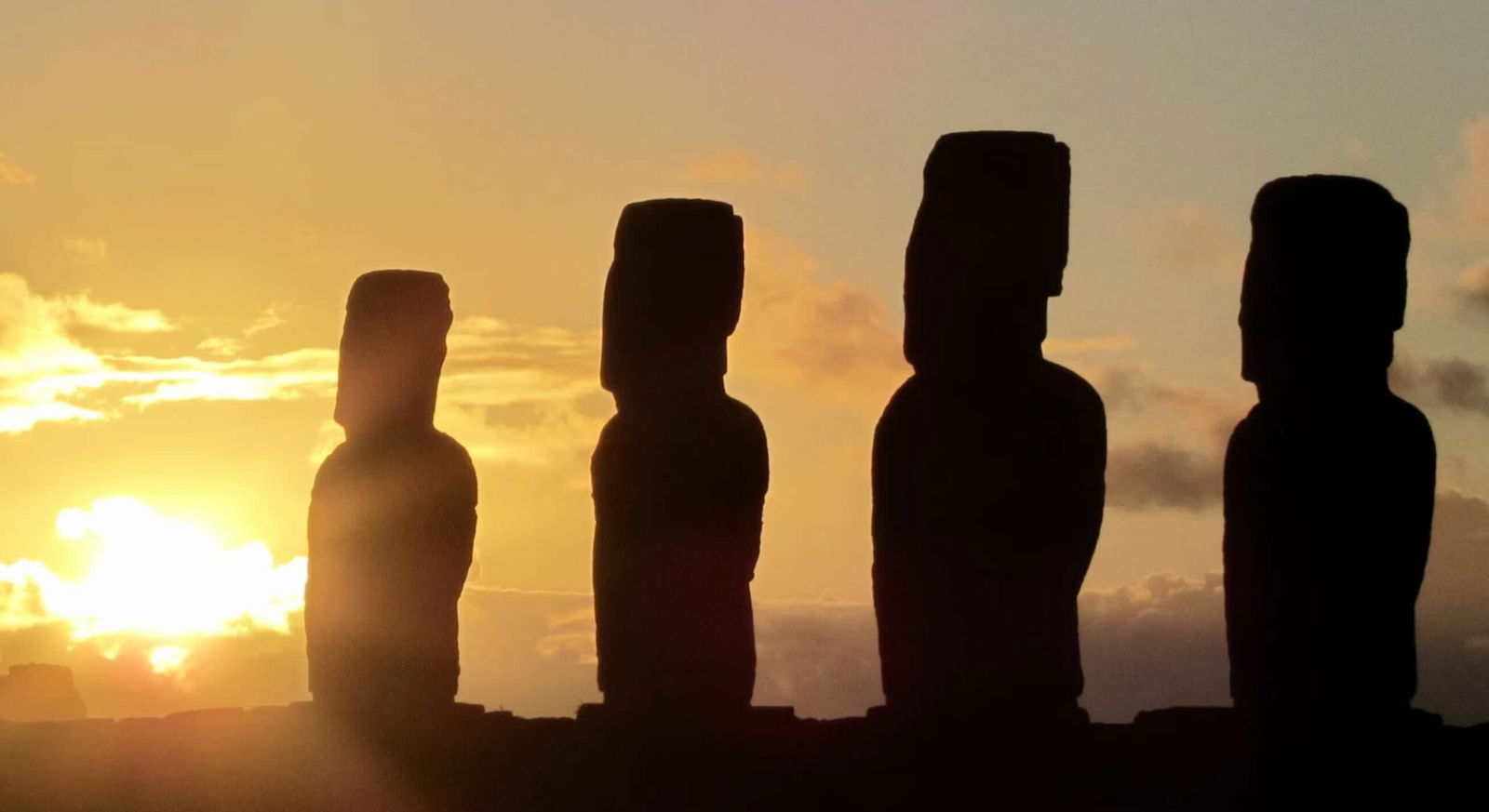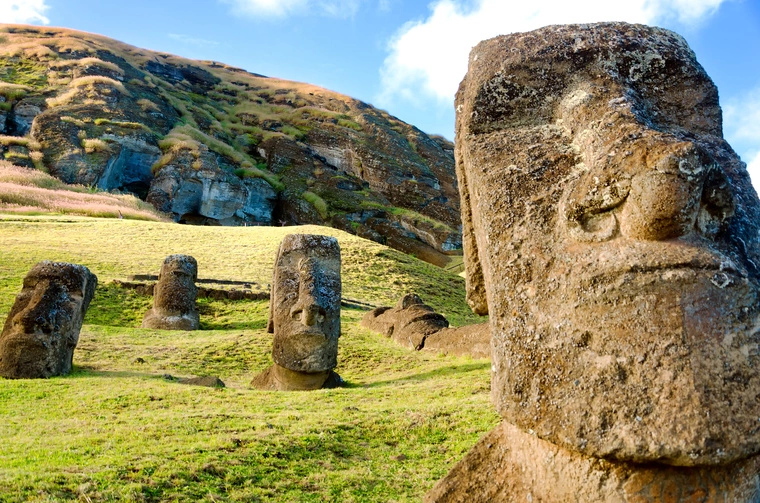Easter Island, famous for its iconic moai statues, has long been puzzled researchers, many of whom associate its mysterious early inhabitants with a cautionary tale of environmental catastrophe that warns against humanity’s overexploitation of natural resources.
However, a new genetic study by a team of international scientists now raises questions about whether environmental depletion led to the downfall of the island, and instead reveals a much different story.
An Environmental Collapse?
For decades, the remote island of Rapa Nui, commonly known as Easter Island, has been shrouded in a narrative of ecological collapse. According to the popular “ecocide” theory, the island’s indigenous people, the Rapanui, deforested their land, depleting natural resources and sparking a violent societal collapse hundreds of years before Europeans arrived on the island.
However, a new study recently published in Nature suggests that this grim tale is more fiction than fact.
Genetic analysis led by researchers from the University of Copenhagen not only reveals stable population growth but also that the inhabitants of Easter Island had contact with indigenous South Americans, possibly hundreds of years before Europeans arrived in the Americas.
“Not only is there no evidence of a population collapse before the Europeans arrived on the island, the data also shows that they were capable of even more formidable voyages across the Pacific than had been previously established, ultimately reaching the Americas,” Assistant Professor of geogenetics at the University of Copenhagen and co-lead author, Dr. Víctor Moreno-Mayar, explained in a press release.
Mystery of the Moai
Rapa Nui, better known as Easter Island, is famous for its nearly 1,000 massive stone statues, called moai, that dot the island’s landscape. Standing an average of 13 feet tall, weighing nearly 13.8 tons, and believed to have been carved between 1250 and 1500 CE, these monolithic statues of human figures have often sparked speculation about the island’s past.
The aura of mystery surrounding Easter Island has largely been fueled by the observations of early European explorers who first arrived in 1722. These first visitors estimated the island’s population to be between 1,500 and 3,000 people, which seemed remarkably low given the numerous massive moai statues scattered across the island.


The apparent contradiction between the small population and the sheer scale of the monumental statues has led to widespread speculation about how such a relatively small group could have constructed and transported the enormous stone figures.
This puzzling disparity has sparked countless theories, including fantastical explanations like the involvement of advanced lost civilizations, extraterrestrial visitors, or a race of prehistoric giants.
A less sensational but popular theory called the “ecocide hypothesis” has proposed that the indigenous civilization of Easter Island was destroyed by self-inflicted environmental degradation.
Largely popularized by Jared Diamond in his 2005 book Collapse: How Societies Choose to Fail or Succeed, the ecocide hypothesis has been a subject of intense debate among archaeologists, historians, and ecologists for decades.
According to this theory, the Rapanui people, numbering up to 15,000 at their peak, cut down trees to transport the moai statues, ultimately causing deforestation and soil erosion. The loss of trees, the hypothesis contends, led to the collapse of agriculture, famine, social unrest, and even cannibalism, resulting in a dramatic population decline.
Proponents of the theory have pointed to several pieces of evidence to support their claims. For example, pollen records show a marked decline in tree cover on the island, and archaeological studies have found charred tree remains, suggesting deforestation. European accounts from the 18th and 19th centuries also describe a small population living in poor conditions.
New Genetic Evidence
However, this latest study challenges this narrative by presenting genetic data that suggests a different scenario. The research team, including scientists from the University of Copenhagen, Austria, France, Chile, Australia, and the U.S., sequenced the genomes of 15 ancient Rapanui individuals who lived between 1670 and 1950 CE. Using radiocarbon dating and advanced population genetics simulations, they found no evidence of a severe population bottleneck in the 1600s.
The genetic analysis shows that the ancient and present-day Rapanui have similar proportions of Native American admixture (around 10%), suggesting that the population did not collapse but remained relatively stable over the centuries. The study also used Bayesian modeling to integrate genetic and radiocarbon dates, further refuting the idea of a demographic collapse in the 1600s.
“Our genetic analysis shows a stably growing population from the 13th century through to European contact in the 18th century,” Dr. Moreno-Mayar said. “This stability is critical because it directly contradicts the idea of a dramatic pre-contact population collapse.”
“The Rapa Nui landscape changed between the people of the island, which is around the 1200s, and the European contact 500 years later. However, the population stability throughout this time shows they were a resilient population capable of adapting to environmental challenges,” co-lead author and researcher at the University of Lausanne Bárbara Sousa da Mota added.
The new findings are not entirely surprising to some scholars. Previous criticism of the ecocide hypothesis has come from researchers like Douglas Owsley, who published a study in 1994 arguing that there is little archaeological evidence of a pre-European societal collapse.
Owsley’s research, which examined bone pathology and osteometric data from the islanders, suggested that few fatalities could be directly attributed to violence. This study, along with others, questioned the idea that the inhabitants of Easter Island experienced widespread famine or warfare before European contact.
Furthermore, critics of the ecocide theory have pointed out that it relies heavily on European accounts written after the arrival of explorers, who may have had biases or misinterpreted what they saw. Some have argued that the theory is an oversimplification that ignores other factors, such as the impact of European diseases and slave raids on the island’s population.
The recent study challenges the ecocide theory and opens new avenues for understanding Easter Island’s past. The genetic evidence suggests that the Rapanui people may have been more adaptable and resourceful than previously thought.
Early Evidence of Contact
Significantly, despite the over 2,000 miles of ocean separating Rapa Nui from South America, genetic analysis revealed that the Rapanui people were in contact with Indigenous Americans well before European arrival.
The research team found that approximately ten percent of the Rapanui gene pool has an Indigenous American origin. They were able to determine that this genetic exchange occurred prior to European contact with both the island and the Americas.
“We looked into how the Indigenous American DNA was distributed across the Polynesian genetic background of the Rapanui.” Dr. Moren-Mayar said. “This distribution is consistent with a contact occurring between the 13th and the 15th centuries.”


Although the study cannot determine the exact location of this contact, researchers say the findings offer the strongest genetic evidence yet of pre-European interaction between Polynesians and Indigenous Americans. This suggests that ancient Pacific navigators may have traveled much farther than previously believed.
The new research also emphasizes the role of external factors in the island’s history. While the Rapanui did modify their environment, the evidence suggests that they did not destroy it to the extent previously believed.
Instead, the real turning point for the island’s population may have come with the arrival of Europeans in the 18th century. European explorers brought new diseases to which the Rapanui had no immunity, leading to devastating epidemics. In the 1860s, Peruvian slave raiders further decimated the population by forcibly removing a large portion of the island’s inhabitants.
Cautionary Tale, or Survival of the Fittest?
Ultimately, these findings offer a broader lesson about human resilience. Rather than a cautionary tale of self-destruction, the story of Rapa Nui may be one of survival against external challenges. The Rapanui people managed to maintain their culture and way of life for centuries, even in the face of environmental changes and external threats.
Dr. Moreno-Mayar notes that the results also serve as a cautionary tale about the potential biases in historical accounts and the importance of careful interpretation of the past.
“Personally, I believe the idea of the ecological suicide is put together as part of a colonial narrative,” Dr. Moreno-Mayar said. “That is this idea that these supposedly primitive people could not manage their culture or resources and that almost destroyed their people. But the genetic evidence shows the opposite.”
“Not only is there no evidence of a population collapse before the Europeans arrived on the island, the data also shows that they were capable of even more formidable voyages across the Pacific than had been previously established, ultimately reaching the Americas. So we can put those ideas to rest now.”
Tim McMillan is a retired law enforcement executive, investigative reporter and co-founder of The Debrief. His writing typically focuses on defense, national security, the Intelligence Community and topics related to psychology. You can follow Tim on Twitter: @LtTimMcMillan. Tim can be reached by email: tim@thedebrief.org or through encrypted email: LtTimMcMillan@protonmail.com

